Protecting Species at Risk on the Move in Skeetchestn Territory
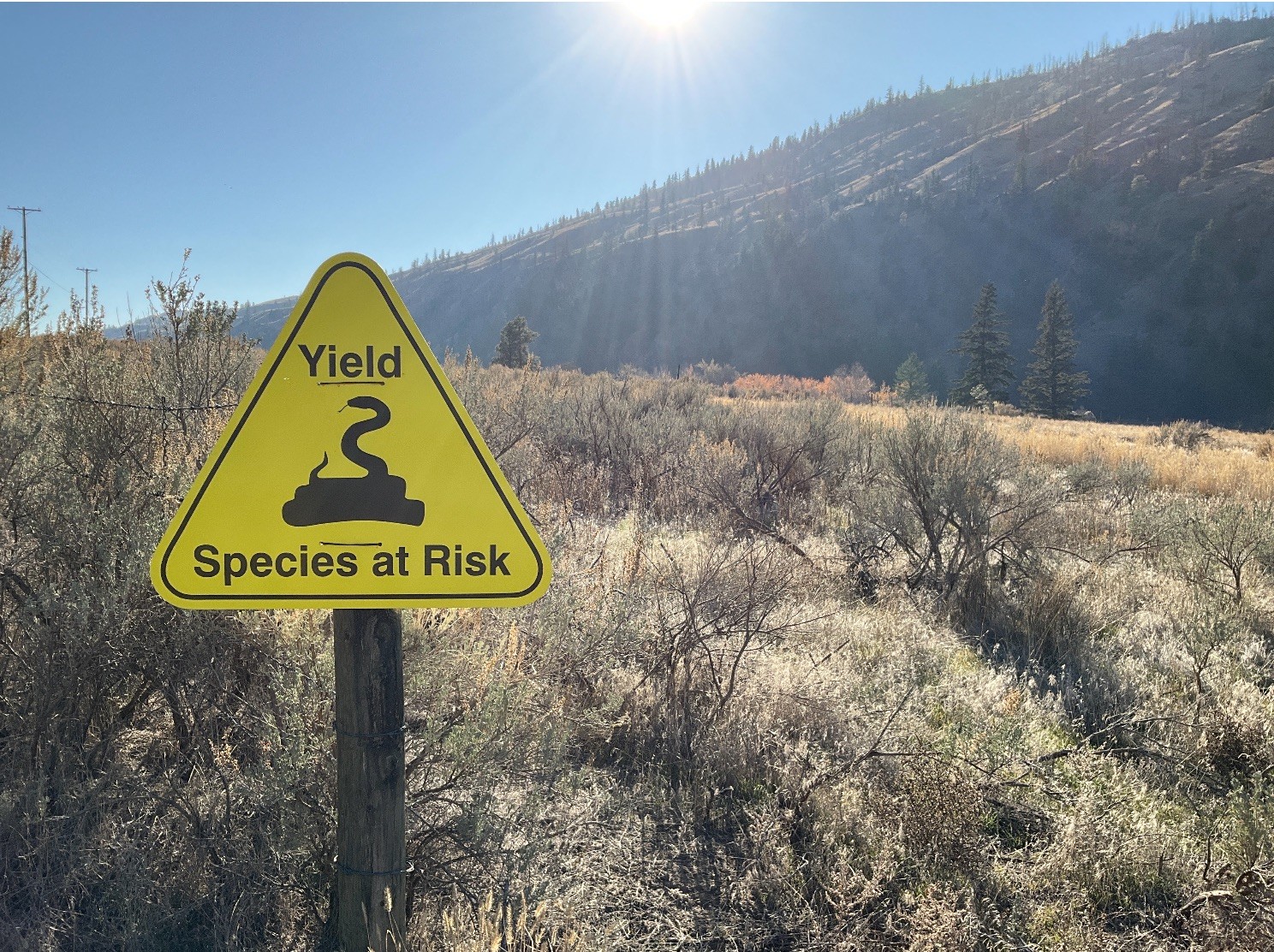
As wildlife navigate increasingly fragmented landscapes, Skeetchestn Natural Resources LLP (SNR). SNR is taking a creative, community-driven approach to keeping animals—and drivers—safe on the roads that cross key ecological corridors in Secwépemc territory.
SNR’s work is part of a growing Indigenous-led effort to restore and maintain ecological connectivity across the Thompson region, where highways, rail lines, and service corridors intersect with critical wildlife movement routes. Their projects target a suite of species at risk (we’ve indicated their current classification under the federal Species at Risk Act (SARA))—including Western rattlesnake (threatened), Great Basin gopher snake (threatened), rubber boa (special concern), Western yellow-bellied (North American) racer (threatened), Western toad (special concern), and Great Basin spadefoot (threatened)—as well as other at-risk species known to suffer high rates of road mortality including mule deer and California bighorn sheep.
Combining Technology, Data, and Local Knowledge
To better understand where animals are moving—and where they’re vulnerable—Skeetchestn has adopted a field-based monitoring system using data management applications to support collection of information from SNR staff and community members. This tool allows field staff the ability to record observations of live and road killed wildlife in real time, capturing precise locations, dates, and species data, while also facilitating the recording of information shared by community members. The resulting map supports analysis to identify wildlife mortality “hotspots” along highways and service roads, supporting more informed mitigation measures such as signage, fencing, culvert installations, and other ecopassage structure construction.
Having the information in place helps acquire funding for conducting mitigation activities and SNR has been successful in acquiring financial support from ECCC’s Habitat Stewardship Program and from industry to install four ecopassages with work well underway (see photos which follow). This information also allows SNR to evaluate the potential cumulative effects from proposed industrial development and other land uses that may increase traffic volumes and propose mitigation of these effects.
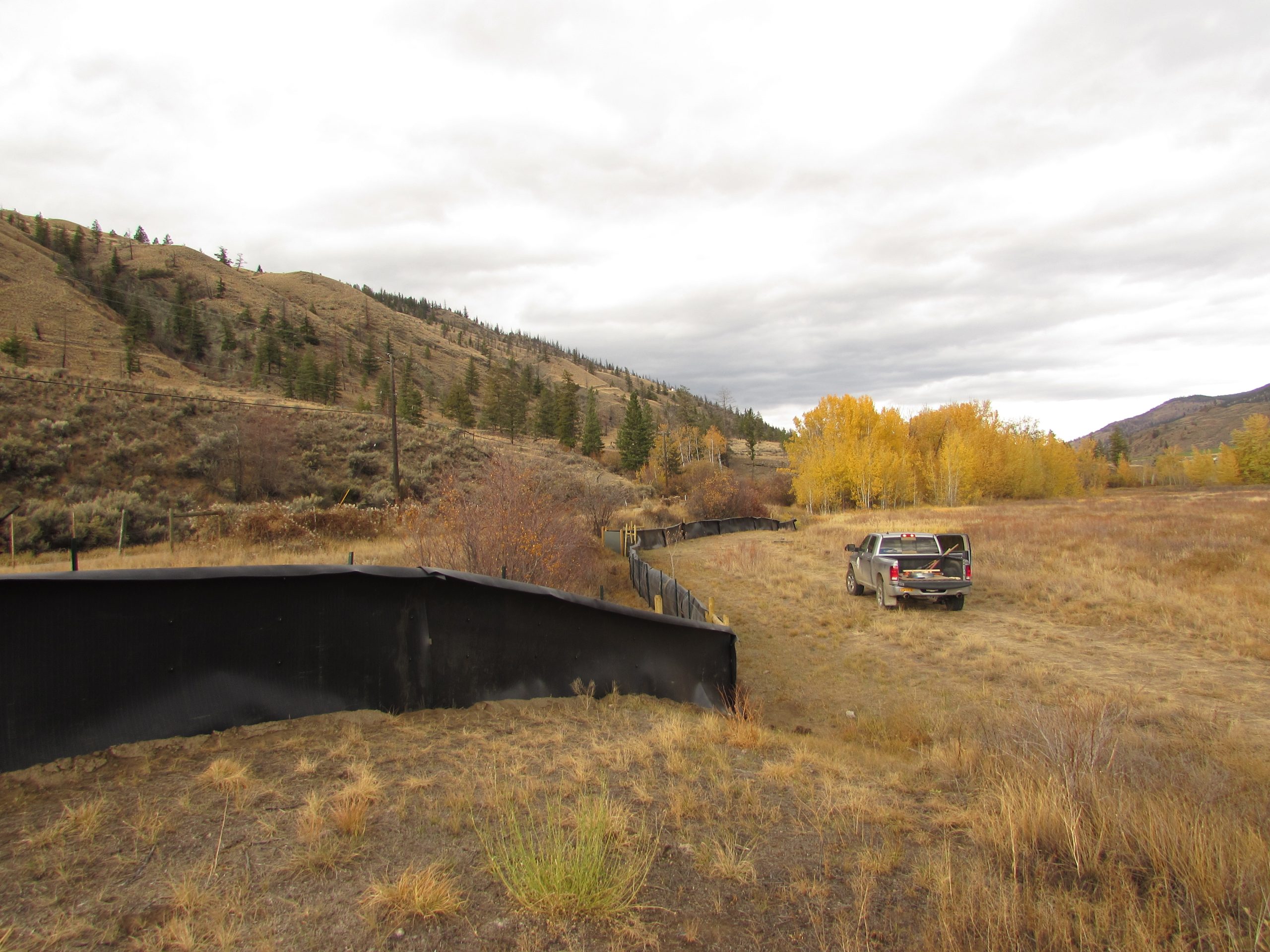

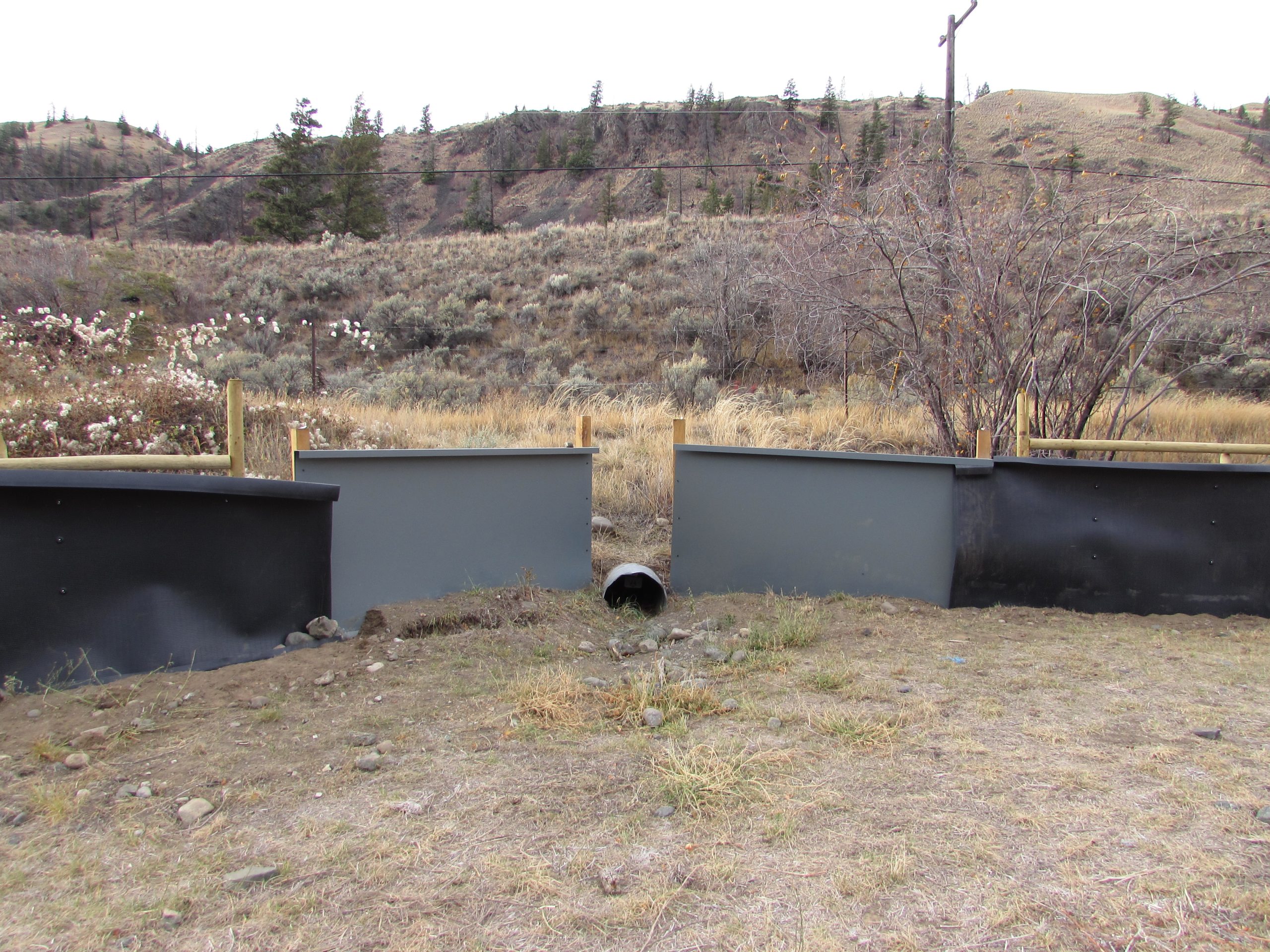
Ecopassage construction by Skeetchestn Natural Resources
The knowledge developed from these assessments is shared with the Ministry of Transportation and Transit (MoTT) and other partners, helping to prioritize where investments in mitigation infrastructure can make the greatest difference for species survival.

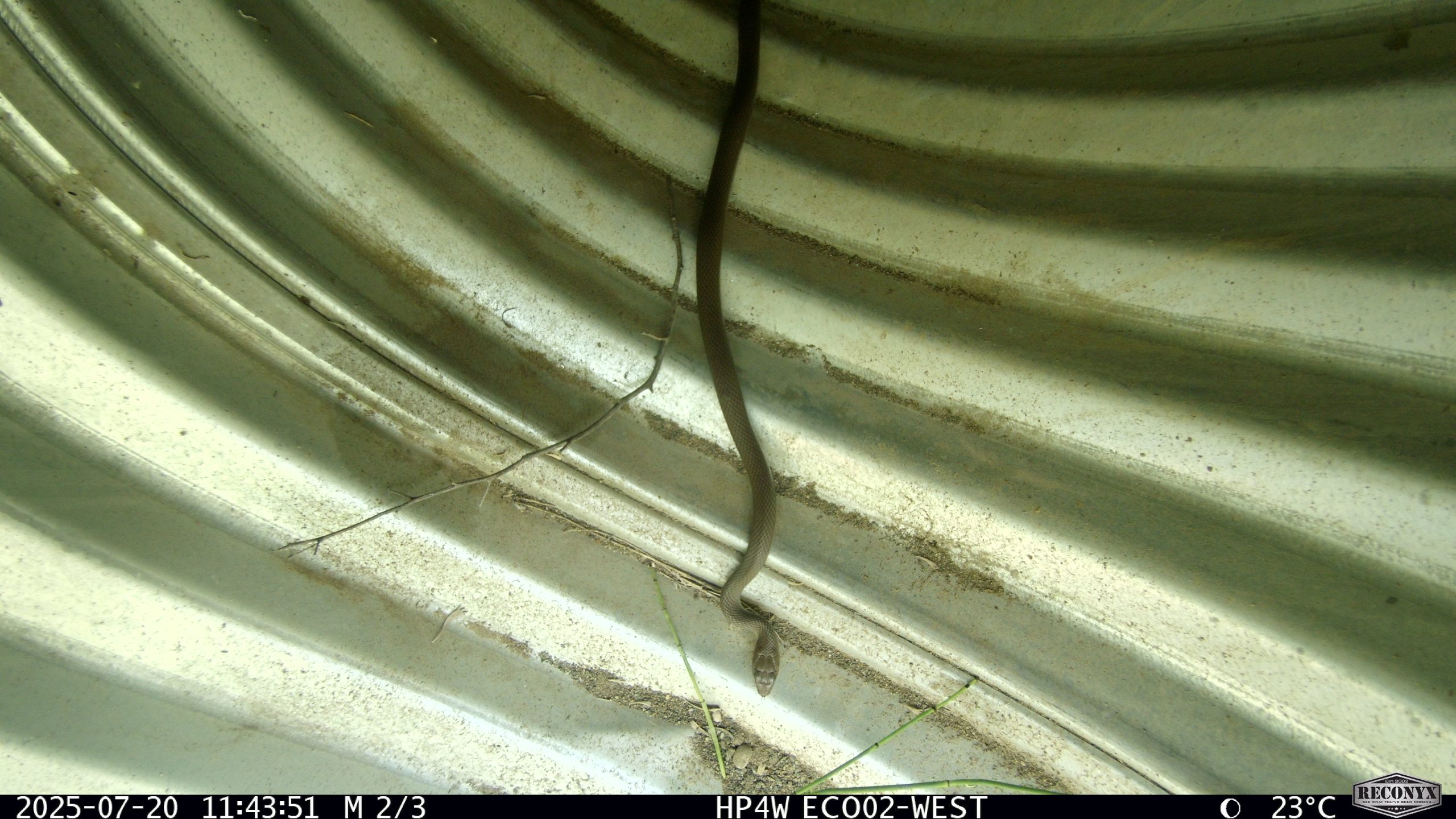
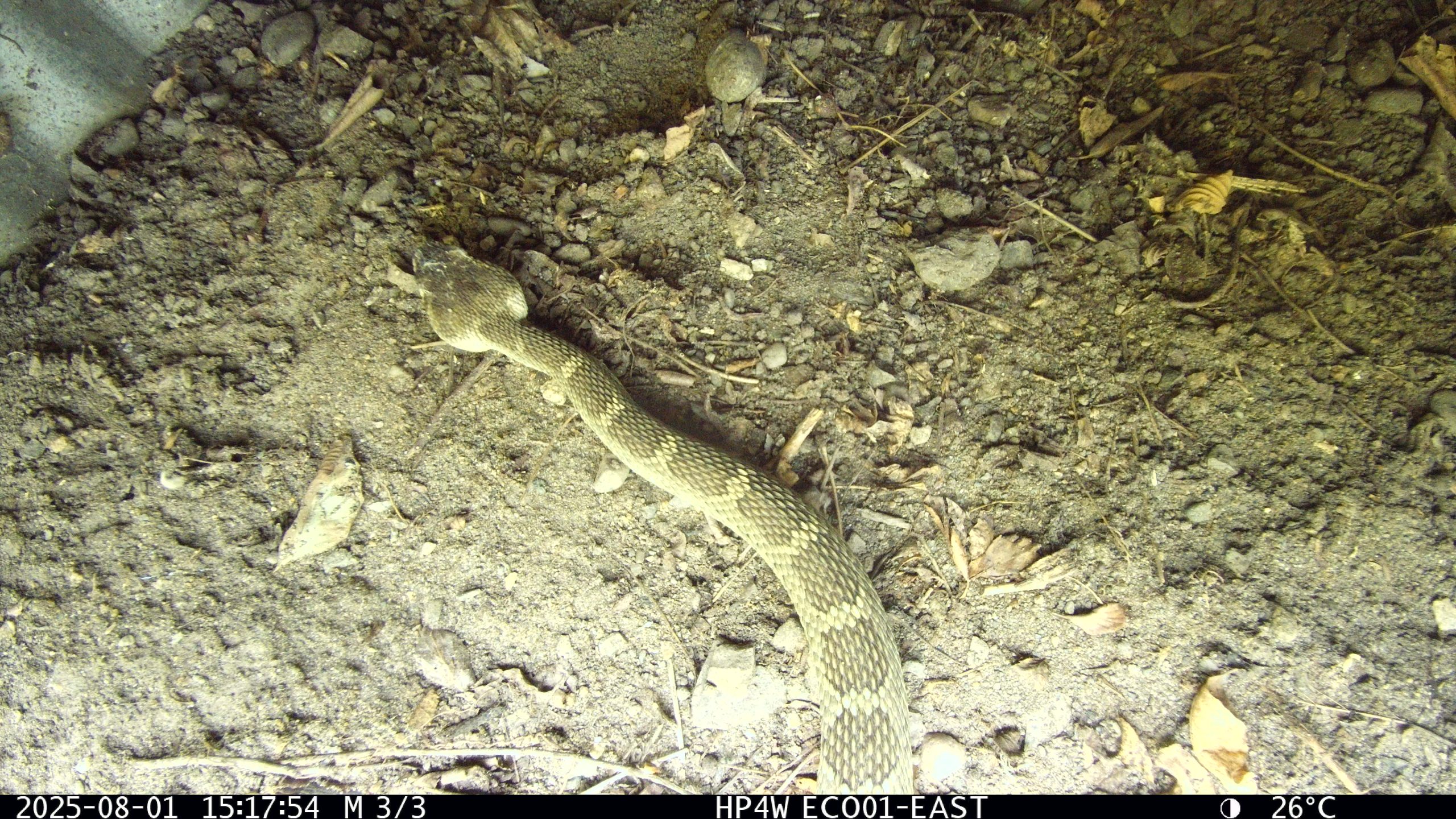

Reptiles using newly constructed ecopassage by Skeetchestn Natural Resources
Building Awareness One Driver at a Time
Recognizing that reducing collisions is also about people, SNR has paired its technical monitoring with community education and awareness. Seasonal “Snake Crossing” signs are installed along key road sections from March through November, reminding drivers to slow down and stay alert during the active months for reptiles and amphibians. The ecopassage construction being undertaken by SNR will also be highlighted in SNRs 2026 annual calendar, a product that is looked forward to by Skeetchestn community members and beyond.

Roadside sign by Skeetchestn Natural Resources
Adding a personal and creative touch, SNR has also launched a community bumper sticker campaign—encouraging residents to show their support for protecting snakes and other wildlife that share the territory’s roads. These small but powerful reminders help build a culture of stewardship and safety that extends from the field to the driver’s seat.
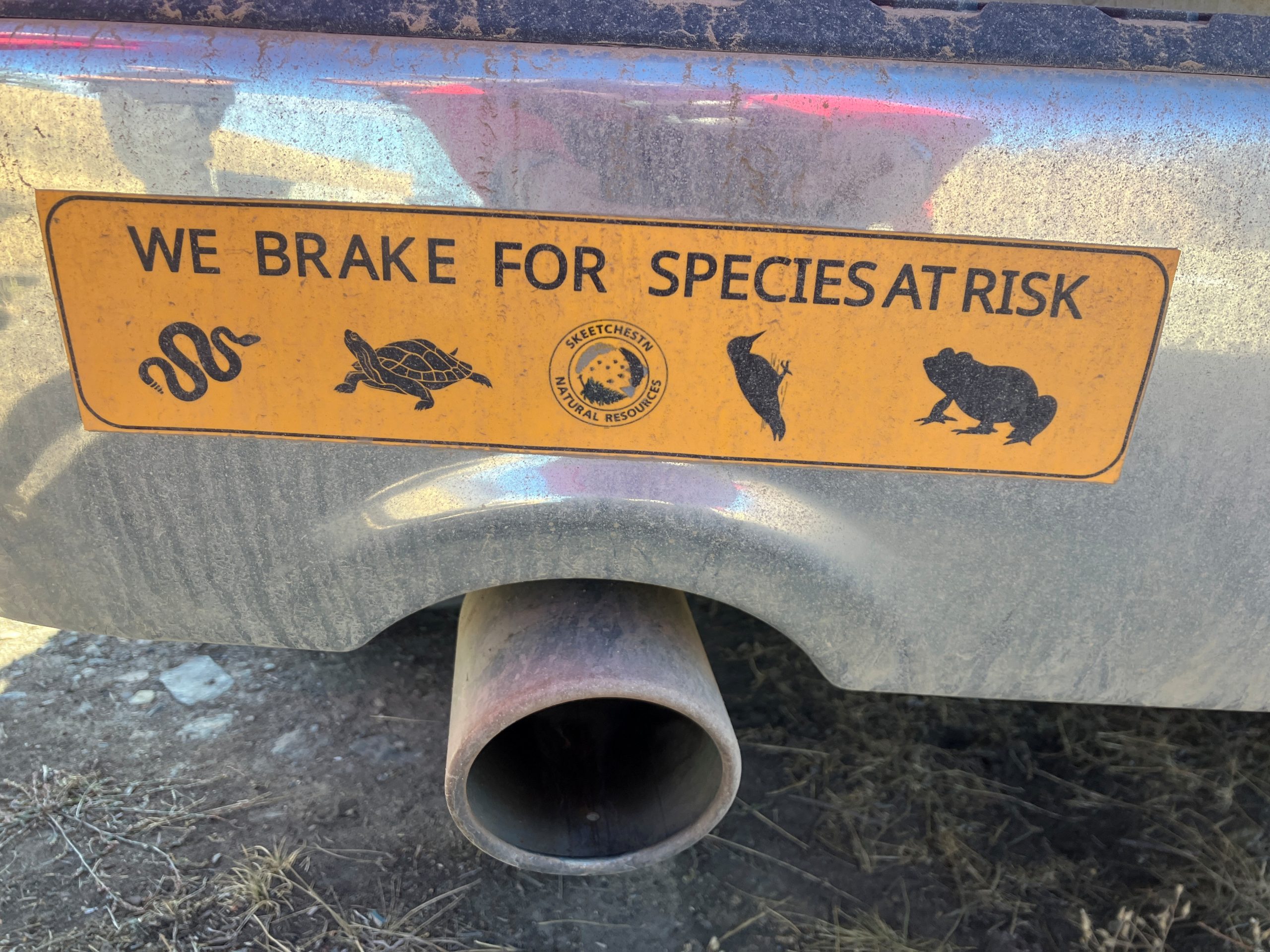
Bumper Sticker by Skeetchestn Natural Resources
Creative Collaborative Conservation
Skeetchestn’s approach demonstrates how Indigenous leadership, local knowledge, and modern tools can come together to tackle complex conservation challenges. By linking data-driven monitoring with public education and infrastructure improvements, their work is paving the way for safer movement corridors—for both people and wildlife—across the Thompson region.
As TNCC and partners continue advancing the Thompson Watershed Ecological Connectivity Initiative, Skeetchestn’s leadership offers an inspiring model of how practical, culturally grounded solutions can reduce species-at-risk mortality and strengthen ecological resilience at the landscape scale.
Learn More
- Skeetchestn Natural Resources LLP
- Ecological Connectivity Project coordinated by TNCC
Featured image: Species at Risk sign by Skeetchestn Natural Resources
